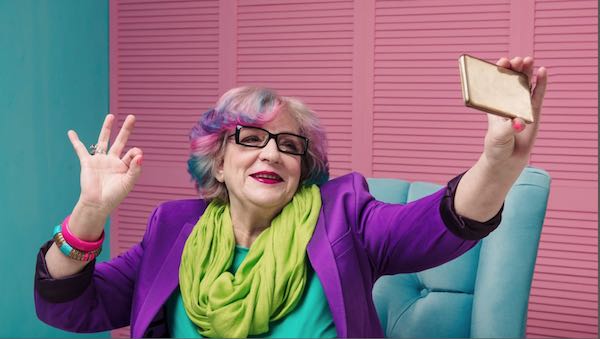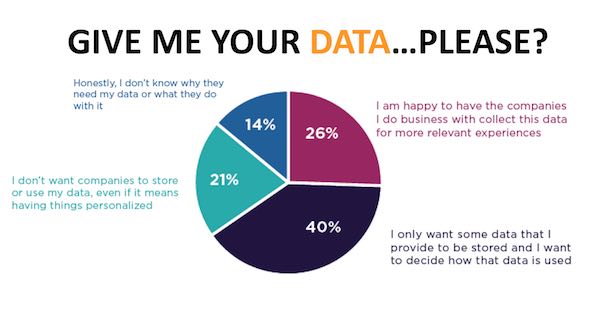Eighty-five percent of consumers expect a mix of printed and digital communications when they communicate with brands. Yes, that includes print. One-third of consumers expect printed mail, specifically, to be part of their ideal communications mix. This desire for a blend of print and digital communications is consistent from generation to generation, dropping only a few percentage points among the youngest consumers (Gen Z, 82%) and rising only a few percentage points among the oldest ones (Silent Generation, 88%).
This data comes from an online survey of 2,000 consumers conducted by the CMO Council in six English-speaking countries across the world: the United States, Canada, Ireland, Australia, New Zealand, and England.
The data was provided as part of a webinar “Channels of Choice” hosted by Target Marketing magazine. One of the interesting things to me was how consistent the data were from generation to generation. Liz Miller, senior vice president of marketing of the CMO Council, who presented the data, commented that one of the biggest mistakes marketers can make is to make assumptions about how consumers in different generations behave. For example, Millennials are always on their phones or retirees are sitting at home watching television. One of my favorite graphics was a grandmotherly figure with crazy glasses and rainbow colored hair.

Source: “Channels of Choice,” Target Marketing Webinar September 26, 2019
“Generations don’t always act the way we think they do,” Miller said. “They act up. They do the unexpected.”
I think about my own parents, who are in their mid-70s. My father lives in the digital world every bit as much as I do. He doesn’t use social media, although my mother does, and he doesn’t use mobile banking, but if you want to know every in and out of Google Maps or need to investigate every nuance and detail of a product, no one can beat my father’s expertise. They are addicted to apps, but ones that are personally important to them...like those that help them identify birds or locate constellations. My in-laws are much the same. Both are in their late 70s, and while they don’t spend as much time online or on their phones, it’s not a generational thing. It’s a lifestyle choice. There is a smartphone in the house, but the pair has other priorities, like going to hole-in-the-wall Americana concerts in historic barns or driving all over the Northeast and Canada on discovery missions. Of course, some of this is demographic (both sets of parents have advanced educations). But that’s the point. Don’t assume.
Knowing, understanding, and tracking consumer channel preferences has never been more important. Not only are there more channels to choose from, but consumers are settling into their preferred channels as a matter of preference and convenience. You can’t assume that because someone is of a certain generation or has certain other demographic characteristics that they behave in a predictable way. This is why channel preference should be tracked just like any other variable in a marketer’s database.
In the survey, the CMO Council also asked, “How important is a company omnichannel strategy to you?” Here is how the respondents answered:
Important: “I don’t need companies to be everywhere except when I really need something” (59%).
Critical: Companies should be where I want, when I want, ready to share and communicate how I expect (28%).
Unimportant: I really do not care if a company has different communication channels (13%).
Although the questions differentiated between “always on” and “when I really need something,” there isn’t a meaningful difference between the two. If you don’t need companies to be everywhere except when you really need something, that means that you must be everywhere all the time because you still never know when that need might arise. Likewise, since there are no generalities in how generations communication, and different consumers need different channels, that means you need all of the communications channels on all the time.
What are the critical attributes of “must have” channels and what makes them the most pleasurable to use?
Critical Attributes of “Must Have” Channels
|
Convenient |
50% |
|
Reliable |
45% |
|
Fast |
41% |
|
Personal |
38% |
|
Trusted |
36% |
Source: “Channels of Choice,” Target Marketing Webinar September 26, 2019
Top Attributes of Enjoyment
|
Access to a person who can help when I need it |
48% |
|
Speed so I can get what I need and get on with my day |
28% |
|
Always on access to my account |
30% |
|
Hearing about new products |
27% |
|
Having the right information to help me when I need it |
18% |
|
Sales and savings |
15% |
Source: “Channels of Choice,” Target Marketing Webinar September 26, 2019
The top channels consumers consider to be “must haves”? Social and telephone. Consumers love social because of its convenience. They love phone because of its reliability.
The common threads regardless of generation?
- All generations expect a blend of both digital and physical channels as part of their ideal communications mix.
- All generations most enjoy having access to a person who can help when they need it.
- No generation gives bands an “A” for omnichannel engagement, as all say brands are doing a “pretty good” job of it.
- All have been frustrated by the lack of connection between channels.
- All have questioned their relationship with a brand because of their frustration.

Source: “Channels of Choice,” Target Marketing Webinar September 26, 2019
Do consumers want these communications personalized? Yes, with a caveat. Most say they want at least some personalization, but they also want to have control over what marketers store and how they use it.
The takeaway? Don’t make assumptions about which channels your target audiences prefer and how they will behave. Ask them. Track their behavior. Respond to what the data is telling you. As a field in your marketing database, channel preference should be every bit as important as any other variable you track.















Discussion
Join the discussion Sign In or Become a Member, doing so is simple and free